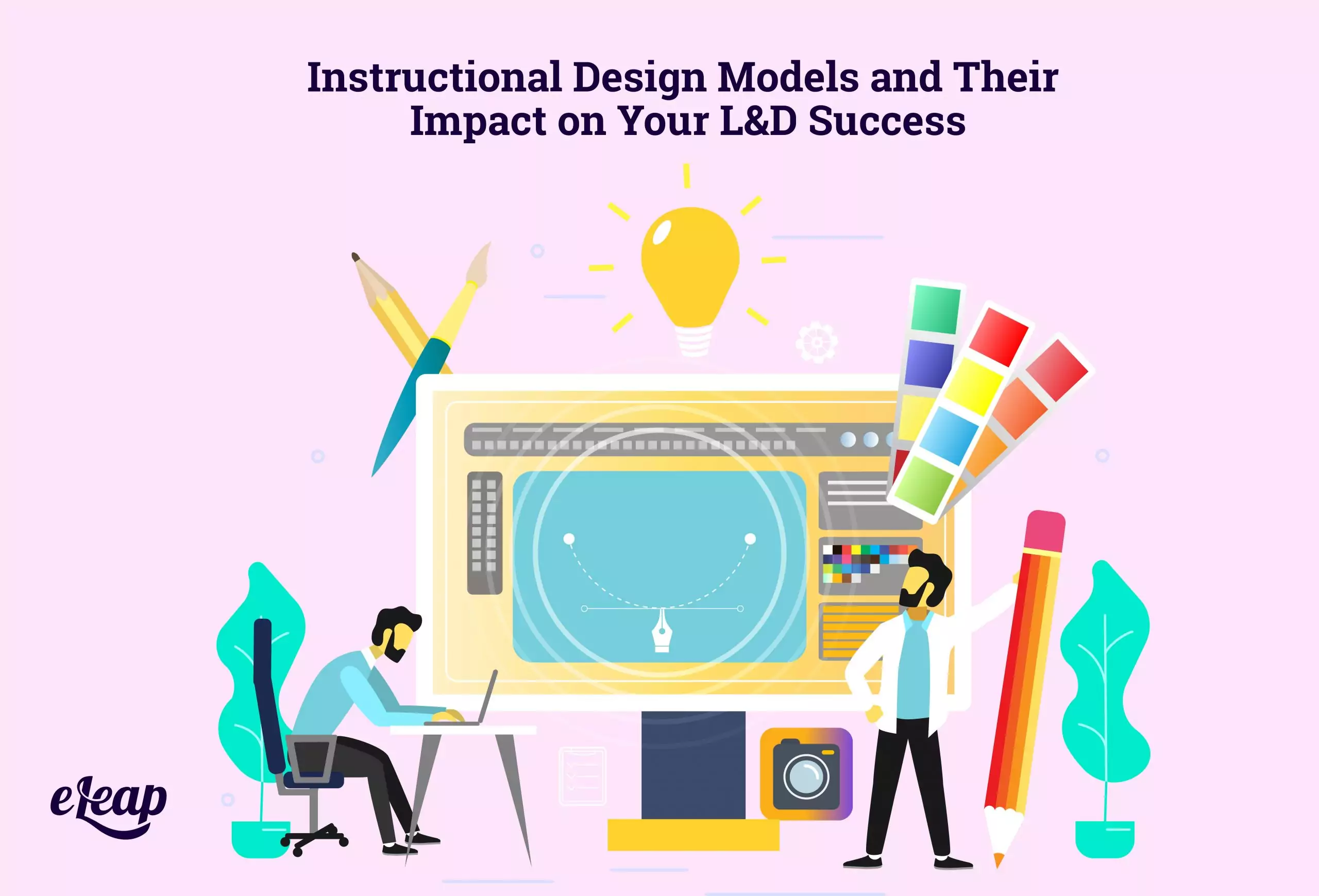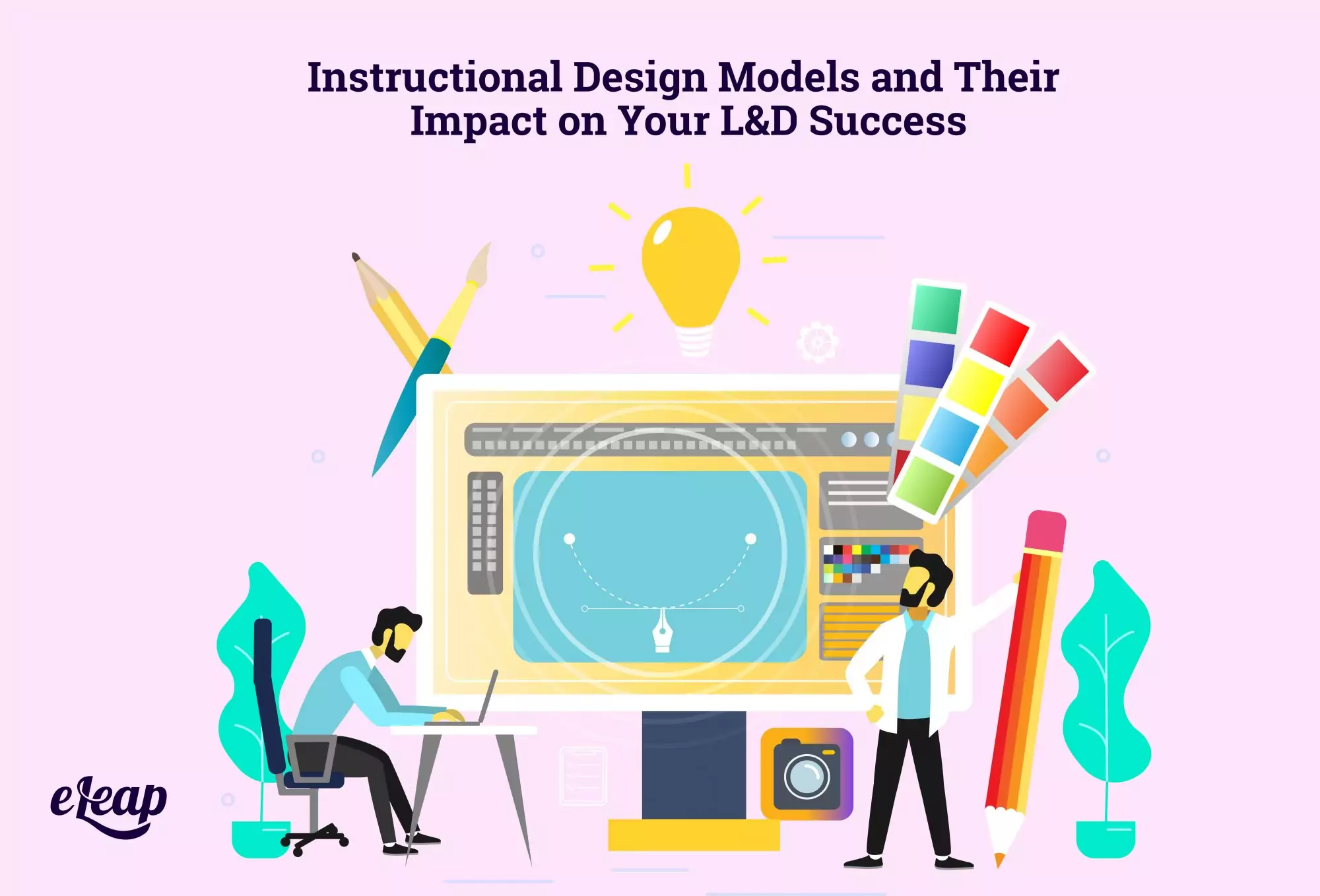Instructional Design Models and Their Impact on Your L&D Success

When it comes to learning and development (L&D), eLearning has proven to be incredibly effective. That’s truer than ever as we remain socially distanced, working remotely, and training remotely. However, eLearning isn’t a magic wand that you can wave and automatically ensure that your learners can master new material and progress through the levels. The right instructional design model is necessary to achieve those goals.

What Is Instructional Design?
To understand instructional design models, you must know a bit more about instructional design. This is nothing more than creating a desired learning experience. It could be through a full online course. It could be a single class. It might be something like a PowerPoint presentation, too.
Instructional designers are essentially architects that put together the building blocks that create a desired learning experience. The goal is to provide a positive, seamless, supportive experience that helps learners master specific skills or inculcate new knowledge through the progression of topics within the broader design model.
What Are Instructional Design Models?
Instructional design models might sound complicated, but the truth is that they’re actually nothing more than frameworks around which you develop and implement learning content. You can think of them as the foundation and frame of a house – they’re the bones that support the home itself. Without instructional design models, all your learning content would collapse, like a home without a frame.
While there are dozens of instructional design models in use today, four of them are more commonly and more widely used. In this guide, we’ll discuss those four options and what each might bring to your L&D efforts. Note that we are not going to declare a winner here, as each has something unique to offer and there’s no one-size-fits-all approach that will work for all organizations.
The Four Most Common Instructional Design Models
With the right instructional design model, you can define the activities in which learners will engage and set the structure that they will follow through their activities. It’s also a way of gaining a high-level view of the entire course or initiative.
ADDIE
The ADDIE framework is the oldest still in existence. Its longevity and widespread use are testaments to this design model’s value, utility, and value across all industries. Each letter in the acronym stands for one step in the design process.
A: Analysis
D: Design
D: Development
I: Implementation
E: Evaluation
Each step in the process provides the chance to make changes and to innovate or iterate before moving to the next phase of development. The final phase, evaluation, comes not only at the end of the process but at the end of each phase within the greater process. In that sense, it’s very similar to Agile methodology.
Bloom’s Taxonomy
Bloom’s Taxonomy is another instructional design model in use today. It originated in the late 1950s but was revised in 2001 to better reflect the way that our understanding of learning and development has changed over the intervening years. There are several steps in this taxonomy, and the (2001 version) of the taxonomy is highlighted below:
- Creating
- Evaluating
- Analyzing
- Applying
- Understanding
- Remembering
You’ll note that these are verbs rather than nouns, such as you’ll find in the ADDIE model. The original taxonomy used nouns, too, but verbs were chosen for the revised version because of the model’s ability to move learners from the basic level into a deeper understanding of the material.
Merrill’s Principles of Instruction
Merrill’s Principles of instruction originated in 2002, making this one of the most recent instructional design models in use today. Like the ADDIE method, this one revolves around five principles. However, rather than being linear, they are circular, surrounding the problem or task in question. The five principles here are:
- Task-centered principle
- Activation principle
- Demonstration principle
- Application principle
- Integration principle
One of the advantages of this instructional design model is that it focuses on real-world problems and challenges. This allows learners to directly relate to the material in question and helps establish better understanding and information retention.
Gagne’s Nine Events of Instruction
The most in-depth instructional design model on our list, Gagne’s Nine Events of Instruction can be used to address challenges that L&D teams face, as well as those of the learners. The nine events include the following:
- Gaining the attention of the students
- Inform students of the objectives
- Stimulate recall of prior learning
- Present the content
- Provide learner guidance
- Elicit performance
- Provide feedback
- Assess performance
- Enhance retention and transfer to the job
Because of the robustness of this instructional design model, it has become one of the most frequently used frameworks. Not only does it allow the creation of a systematic process, but the model is very flexible and architects can adapt events to different situations and outcomes.
Additional Instructional Design Models
While we have covered four of the most frequently used instructional design models today, numerous others may fit your needs. These include Cathy Moore’s Action Mapping, the Kemp Design Model, the Successive Approximation Model, the Dick and Carey Model, and others. Note that there is no single model that will work equally well for all eLearning design and development needs.
You’ll need to compare your options, determine your outcomes, and then decide on an instructional design model that helps you achieve those goals while fostering the best possible outcome for your learners. Moreover, you may find that you need to change instructional design models depending on what you’re developing. For instance, ADDIE might work very well for designing a limited course, while Gagne’s Nine Events of Instruction may be better suited to the development of a broader eLearning initiative.
What instructional design models have you seen the greatest value from? Which are your favorites? Any that you have used that resulted in less than desirable outcomes? Share your experiences in the comments below.